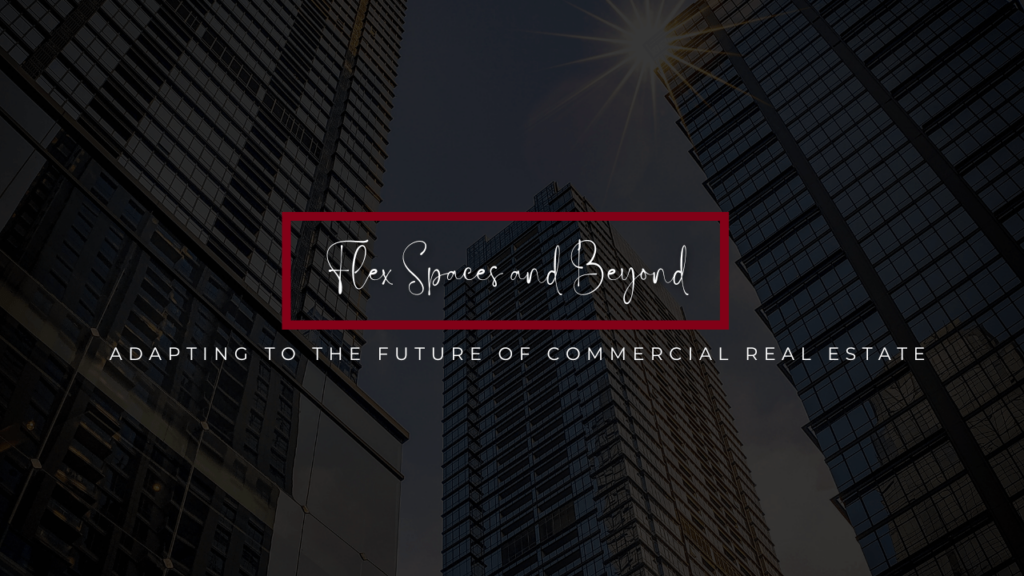
The commercial real estate industry has been evolving over the last few years. The growth in online retailers and the shift in office space needs during the pandemic required the industry to solve problems creatively and to think about how to serve the shifting needs of commercial tenants.
As the need for brick-and-mortar storefronts evolves and people around the world have adapted to remote work arrangements, the physical spaces we once needed for commercial and business activities are not what they used to be.
That’s where flex spaces and other innovative concepts come in.
We want to explore what flex spaces are, how they contribute to the future of commercial real estate, and other trends to watch out for in the industry.
Flex Space in Commercial Property Terms
Flex spaces refer to workspaces and commercial units that can be easily adapted to meet the changing needs of tenants. These spaces can be leased on a shorter-term basis than traditional office leases, and they offer a range of amenities to support the needs of remote and distributed teams. Flex spaces are particularly popular in the tech industry, where startups and other new companies are constantly pivoting their business models.
Commercial Tenant Demand for Flex Space
One key advantage of flex spaces is their cost-effectiveness. Traditional office leases typically require tenants to pay rent for the entire space, regardless of how much of that space they actually use. With flex spaces, tenants only pay for the amount of space they need, which can result in significant savings. Flex spaces also offer more flexibility than traditional leases. Tenants can expand or contract their space as needed, without the hassle of renegotiating a lease.
This works for retailers who only need to rent space for a specific amount of time, too. Think about seasonal stores that are only in business for a few months out of the year. Flexible spaces and lease agreements work in their favor.
Flex Spaces Prioritize Sustainability and Tech
 With flex spaces, we have seen an increased focus on sustainability and wellness. Tenants are looking for buildings that are environmentally friendly, with features like solar panels and green roofs.
With flex spaces, we have seen an increased focus on sustainability and wellness. Tenants are looking for buildings that are environmentally friendly, with features like solar panels and green roofs.
Another trend is the rise of smart buildings. Smart buildings use sensors and other technology to automate building functions like lighting, heating, and cooling. They can also collect and analyze data to improve building efficiency and optimize the tenant experience. For example, in a smart building, air conditioning can be automatically adjusted based on how many people are present in a particular area.
The commercial real estate industry is evolving rapidly, and investors who stay ahead of the curve will be well-positioned to succeed. Flex spaces are a key part of this evolution, as they offer tenants the flexibility and cost-effectiveness they need in a rapidly changing business landscape. In addition to flex spaces, investors should also take note of trends like sustainability and smart buildings.
We help our commercial real estate investors stay a few steps ahead of the coming trends. If you’d like to talk about how to prepare your investment plan and your buildings for coming trends such as flex spaces, get in touch. Please contact us at Preston-Lee Management Company. We’ve been providing commercial property management services in the High Desert for more than 30 years.
